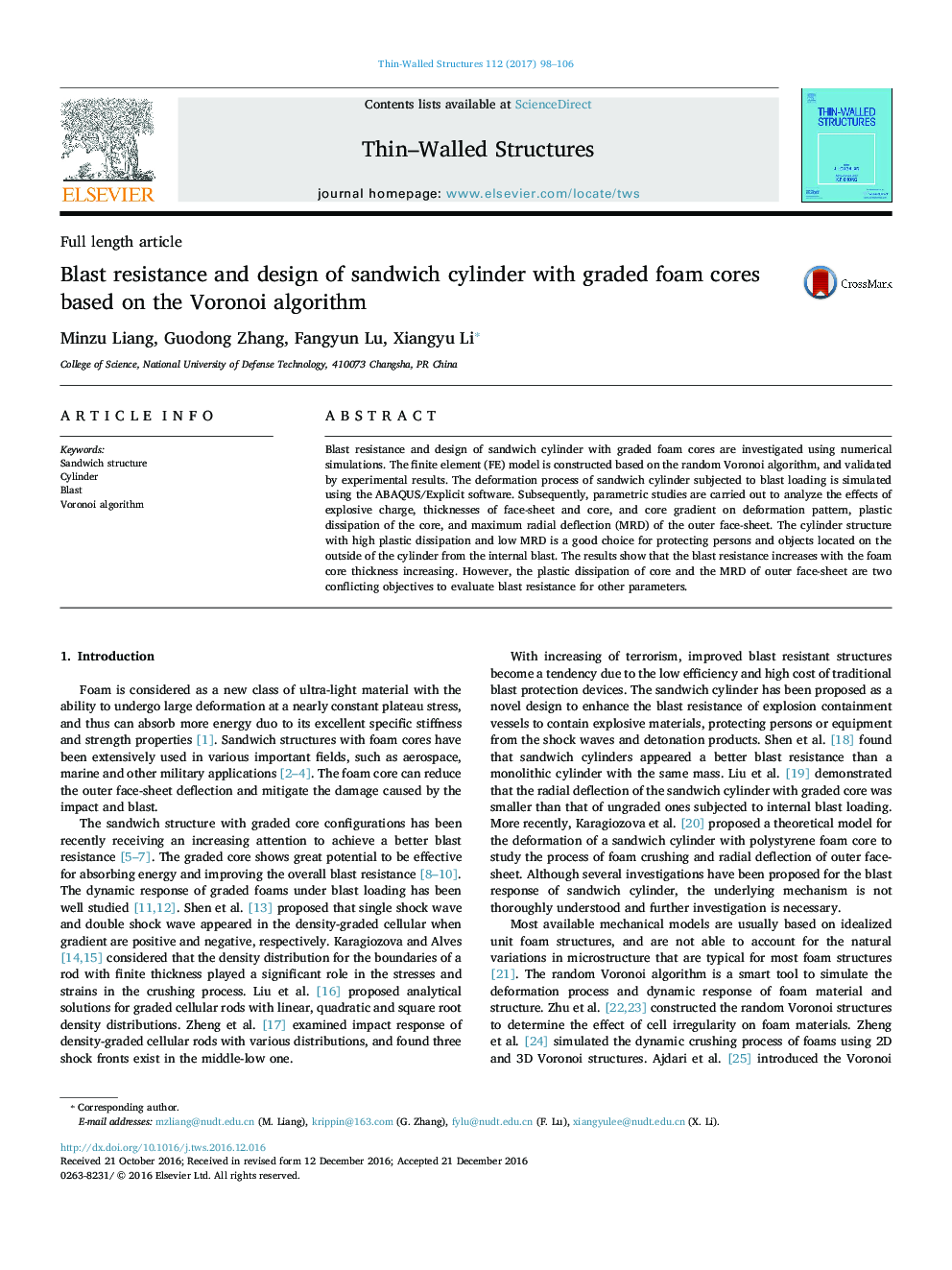| Article ID | Journal | Published Year | Pages | File Type |
|---|---|---|---|---|
| 4928458 | Thin-Walled Structures | 2017 | 9 Pages |
Abstract
Blast resistance and design of sandwich cylinder with graded foam cores are investigated using numerical simulations. The finite element (FE) model is constructed based on the random Voronoi algorithm, and validated by experimental results. The deformation process of sandwich cylinder subjected to blast loading is simulated using the ABAQUS/Explicit software. Subsequently, parametric studies are carried out to analyze the effects of explosive charge, thicknesses of face-sheet and core, and core gradient on deformation pattern, plastic dissipation of the core, and maximum radial deflection (MRD) of the outer face-sheet. The cylinder structure with high plastic dissipation and low MRD is a good choice for protecting persons and objects located on the outside of the cylinder from the internal blast. The results show that the blast resistance increases with the foam core thickness increasing. However, the plastic dissipation of core and the MRD of outer face-sheet are two conflicting objectives to evaluate blast resistance for other parameters.
Keywords
Related Topics
Physical Sciences and Engineering
Engineering
Civil and Structural Engineering
Authors
Minzu Liang, Guodong Zhang, Fangyun Lu, Xiangyu Li,
